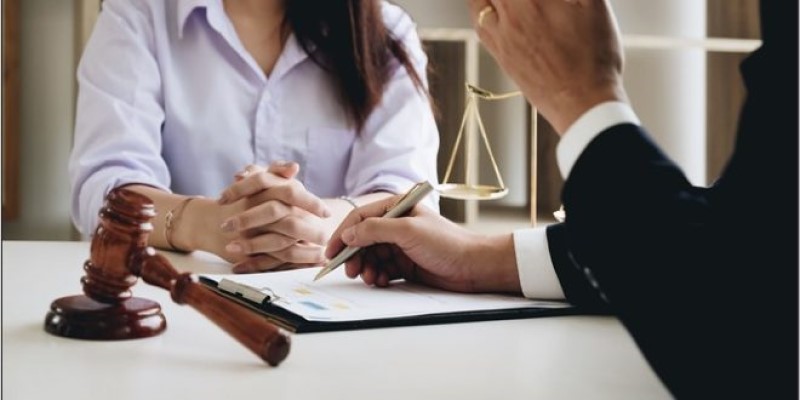
Introduction
In the pursuit of justice for victims of abuse, the absence of a witness can present significant challenges. However, with strategic approaches and diligent preparation, it’s possible to build a compelling case even without direct eyewitness testimony. This article delves into effective strategies for abuse lawsuits, empowering legal professionals and advocates to navigate this complex terrain with confidence.
Understanding the Legal Landscape
Navigating abuse lawsuits requires a comprehensive understanding of the legal framework governing such cases. From statutes of limitations to burden of proof, legal practitioners must adeptly navigate various legal nuances to build a robust case. Familiarity with relevant case law and precedents is essential for crafting persuasive arguments that withstand judicial scrutiny.
Leveraging Circumstantial Evidence
In cases lacking direct witness testimony, circumstantial evidence plays a pivotal role in establishing culpability. By meticulously piecing together disparate fragments of evidence, legal teams can construct a compelling narrative that resonates with judges and juries alike. From forensic analysis to digital footprints, leveraging diverse forms of circumstantial evidence enhances the credibility of the case.
Expert Testimony and Forensic Analysis
Expert witnesses bring specialized knowledge and insight to abuse lawsuits, providing invaluable context and analysis. Whether it’s forensic psychologists unraveling the intricacies of trauma or digital forensics specialists uncovering electronic evidence, expert testimony bolsters the credibility of the plaintiff’s case. Collaborating with seasoned professionals enhances the persuasiveness of the legal argument.
Corroborating Witness Testimony
While direct eyewitness testimony may be absent, corroborating witnesses can still provide crucial support for the plaintiff’s claims. By identifying individuals who can attest to the victim’s character, behavior, or disclosures, legal teams strengthen the credibility of the case. Corroborating witnesses lend additional weight to the plaintiff’s narrative, reinforcing the veracity of their allegations.
Building a Strong Documentary Trail
Documentary evidence serves as a cornerstone of abuse lawsuits, offering tangible proof of wrongdoing and harm. From medical records documenting injuries to communication logs substantiating threats or harassment, a robust documentary trail bolsters the plaintiff’s case. Thorough documentation not only strengthens the legal argument but also facilitates effective communication with opposing counsel and the court.
Psychological Assessments and Victim Impact Statements
Psychological assessments provide crucial insights into the emotional and psychological impact of abuse on the victim. By conducting thorough assessments and eliciting victim impact statements, legal teams highlight the profound harm inflicted upon the plaintiff. Humanizing the plaintiff’s experience fosters empathy and understanding, compelling judges and juries to acknowledge the severity of the misconduct.
Pursuing Collaborative Justice Initiatives
In addition to traditional litigation avenues, pursuing collaborative justice initiatives can yield meaningful outcomes for abuse survivors. Alternative dispute resolution mechanisms, such as mediation or restorative justice processes, offer victims a platform to voice their experiences and seek redress outside the courtroom. Embracing a multi-faceted approach to justice empowers survivors and promotes healing and reconciliation.
Advocating for Legislative Reform
Effecting meaningful change in the realm of abuse lawsuits necessitates advocacy for legislative reform. By lobbying for amendments to existing laws or the enactment of new statutes, advocates can strengthen legal protections for survivors and enhance access to justice. Engaging with policymakers and legislative stakeholders amplifies the voices of survivors, driving systemic change at the societal level.
Educating Communities and Institutions
Preventing abuse and fostering a culture of accountability requires proactive education and awareness-raising efforts. By educating communities, institutions, and individuals about the dynamics of abuse and the importance of intervention, advocates can prevent future instances of harm. Empowering bystanders to recognize and respond to signs of abuse promotes a safer and more supportive environment for all.
Supporting Survivors Through Comprehensive Services
Beyond the confines of the courtroom, supporting survivors entails providing comprehensive services tailored to their unique needs. From trauma-informed counseling to advocacy and support groups, holistic support services empower survivors to heal and reclaim their lives. Collaborating with community-based organizations and service providers enhances the efficacy of these interventions.
Embracing a Trauma-Informed Approach
Central to effective advocacy in abuse lawsuits is the adoption of a trauma-informed approach. Recognizing the pervasive impact of trauma on survivors’ lives, legal practitioners must prioritize sensitivity, empathy, and empowerment in their interactions. By centering survivors’ voices and experiences, advocates foster a culture of validation and support that is essential for healing and justice.
Conclusion
Building a compelling case without a witness is a formidable challenge, but with the right strategies and resources, it’s entirely achievable. By leveraging circumstantial evidence, expert testimony, and collaborative justice initiatives, legal professionals and advocates can effectively advocate for survivors of abuse. Together, we can work towards a future where justice is accessible to all, irrespective of the complexities of their circumstances.
FAQs
- How can I prove abuse without eyewitness testimony?
- Abuse can be substantiated through a combination of circumstantial evidence, expert testimony, corroborating witnesses, and documentary proof.
- What role do psychological assessments play in abuse lawsuits?
- Psychological assessments provide crucial insights into the impact of abuse on the victim’s mental and emotional well-being, enhancing the credibility of their claims.
- Are there alternatives to traditional litigation for abuse survivors?
- Yes, survivors can explore alternative dispute resolution mechanisms such as mediation or restorative justice processes to seek redress outside the courtroom.
- How can I support a loved one who is a survivor of abuse?
- Listening non-judgmentally, offering validation and support, and connecting them with appropriate resources and services can make a profound difference in their healing journey.
- What legislative reforms are needed to strengthen protections for abuse survivors?
- Legislative reforms should focus on extending statutes of limitations, expanding access to legal remedies, and enhancing support services for survivors.
- How can I contribute to preventing abuse in my community?
- By educating yourself and others about the dynamics of abuse, promoting healthy relationship behaviors, and intervening when necessary, you can play a vital role in preventing abuse.
